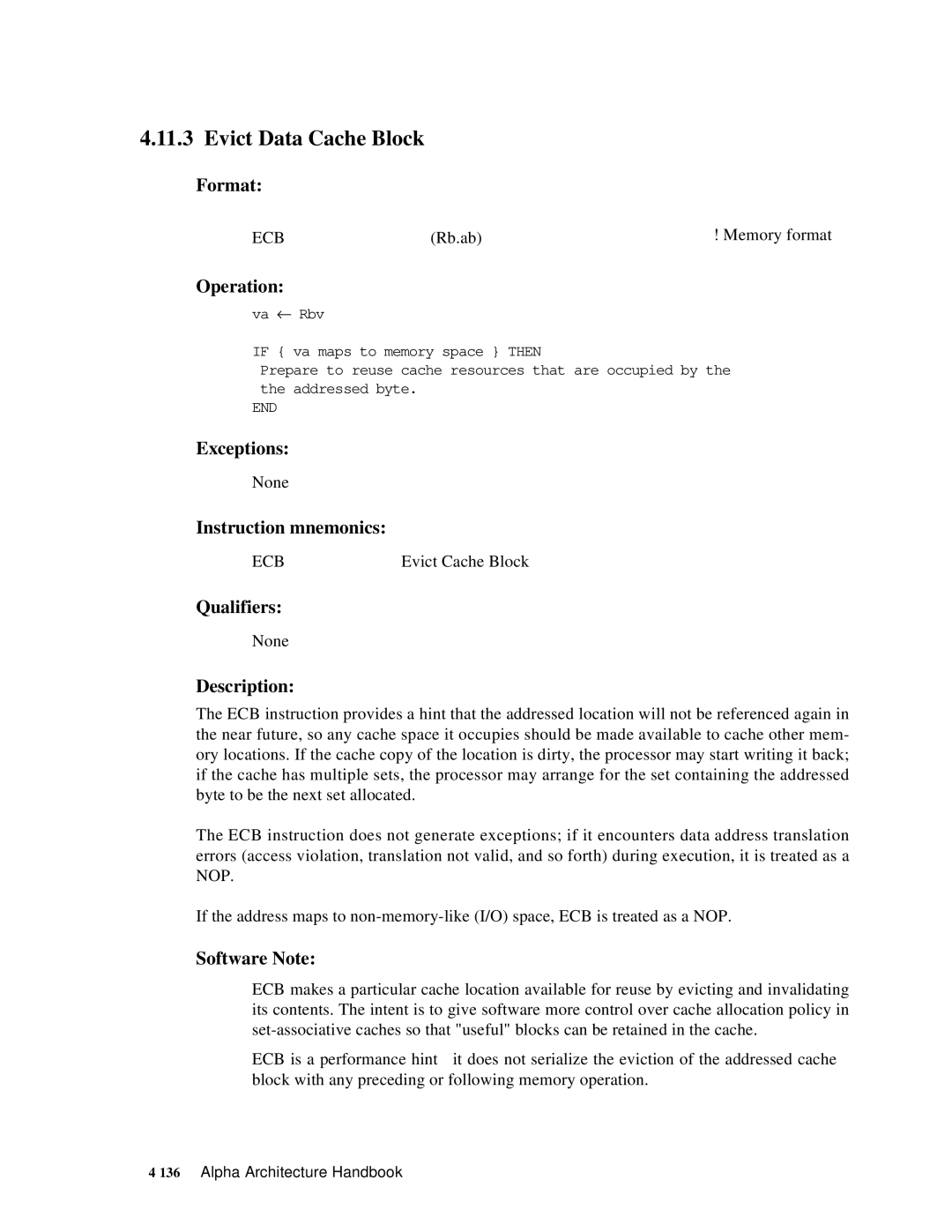4.11.3 Evict Data Cache Block
Format:
ECB | (Rb.ab) | ! Memory format |
Operation:
va ← Rbv
IF { va maps to memory space } THEN
Prepare to reuse cache resources that are occupied by the the addressed byte.
END
Exceptions:
None
Instruction mnemonics:
ECB | Evict Cache Block |
Qualifiers:
None
Description:
The ECB instruction provides a hint that the addressed location will not be referenced again in the near future, so any cache space it occupies should be made available to cache other mem- ory locations. If the cache copy of the location is dirty, the processor may start writing it back; if the cache has multiple sets, the processor may arrange for the set containing the addressed byte to be the next set allocated.
The ECB instruction does not generate exceptions; if it encounters data address translation errors (access violation, translation not valid, and so forth) during execution, it is treated as a NOP.
If the address maps to
Software Note:
•ECB makes a particular cache location available for reuse by evicting and invalidating its contents. The intent is to give software more control over cache allocation policy in
•ECB is a performance hint — it does not serialize the eviction of the addressed cache block with any preceding or following memory operation.
